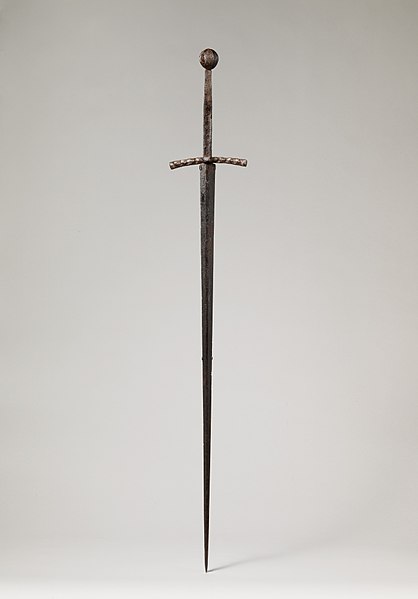A longsword is a type of European sword characterized as having a cruciform hilt with a grip for primarily two-handed use, a straight double-edged blade of around 80 to 110 cm, and weighing approximately 1 to 1.5 kg.
Hand-and-a-half sword, probably German, c. 1400–1430
Replica of the Brescia Spadona, a 15th Century "hand and a half" longsword named after the city where it now resides, in the Museo Civico L. Mazzoli in Brescia, Italy. It has a tapered type XVIIIa or type XVIa blade and an octagonal pommel.
1440s illustration of one- and two-handed use of the longsword. Note the sword being used one-handed is drawn shorter and may also be intended as a large knightly sword (CPG 339 fol. 135r).
Example of two handed use vs. half-sword, dating to c. 1418 (CPG 359, fol. 46v).
A sword is an edged, bladed weapon intended for manual cutting or thrusting. Its blade, longer than a knife or dagger, is attached to a hilt and can be straight or curved. A thrusting sword tends to have a straighter blade with a pointed tip. A slashing sword is more likely to be curved and to have a sharpened cutting edge on one or both sides of the blade. Many swords are designed for both thrusting and slashing. The precise definition of a sword varies by historical epoch and geographic region.
Swiss longsword, 15th or 16th century
Western Han jian
Apa-type swords, 17th-century BC
The swords found together with the Nebra sky disk, c. 1600 BC








